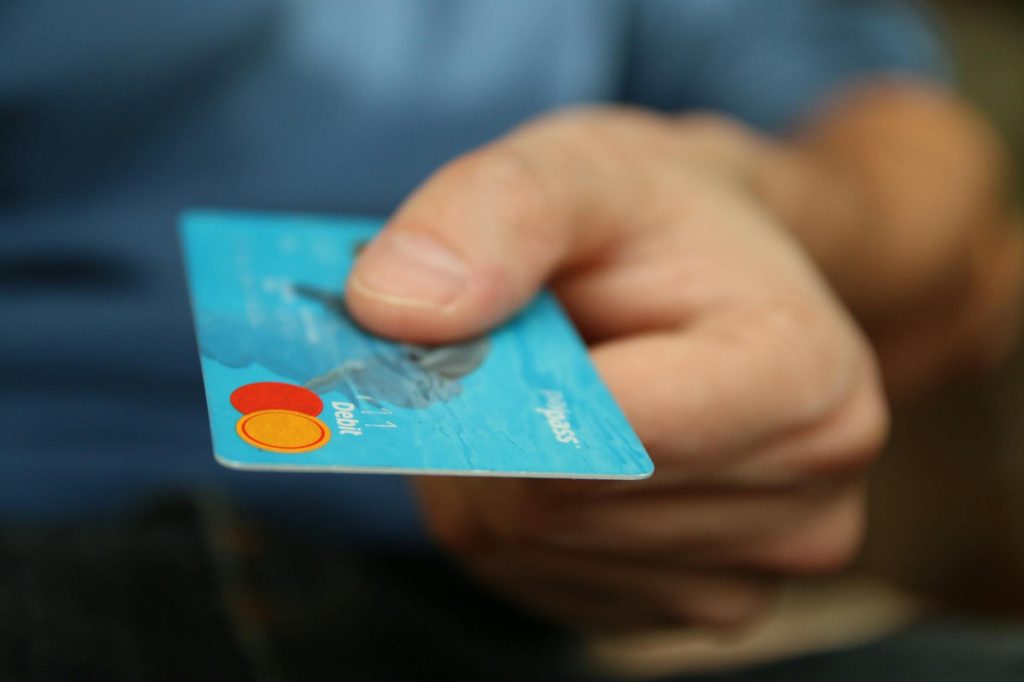On my second week in Santo Domingo—ten years and countless tostones ago—I walked into a bank wearing beach sandals and optimism. I’d come for a simple mission: open a savings account. I left an hour later with a paper ticket labeled “turno 87,” a new respect for air conditioning, and a notebook crammed with Spanish notes the teller kindly dictated like a patient aunt. It wasn’t my first rodeo in Spanish, but it was my first time wrangling the bank’s particular language. That day taught me that the bank has its own universe of Spanish Vocabulary, and if you speak it, doors open faster—and fees mysteriously shrink.
Why banks are a language classroom you didn’t expect
In the Dominican Republic, the bank lobby is a waiting room, yes, but also a slice of the island’s rhythm. You’ll hear “dígame, caballero” with a soft smile, an aunt calling a stranger “mi amor,” and the low drum of gossip about baseball and exchange rates. The tellers shift between formal usted and familiar warmth, and you learn that your Spanish Vocabulary has to flex, not just translate. When I travel to Colombia for vacation, the vibe changes: “Con gusto, señor,” the pace a touch more formal, the accent a little crisper, less merengue swing, more Andean cadence. Both teach you to listen for register, not just words.
Documents, yes—but ask for them the Dominican way
If you ask, “¿Qué documentos necesito?” you’ll get a list; if you ask like a local, you get guidance. In the DR, the center of gravity is your cédula if you’re resident, or passport plus proof of domicile if not. The bank might ask for a job letter, a tax ID, or a reference. The key phrase is not just “¿Qué piden?” but “¿Qué piden normalmente para extranjeros?” That one word, normally, signals that you’re aiming for the standard path, not the exceptional bureaucratic odyssey. In Colombia, you’ll hear similar items with different flavors: cédula de extranjería, certificado laboral, and a tidy PDF of your utilities bill.
In both places, I learned to frame my requests with small courtesies that aren’t fluff—they’re lubrication. “Cuando tenga un minuto,” and “¿Le molesta si le hago una consulta?” change the tenor of the exchange. Your Spanish Vocabulary shifts from transactional to relational, which is the real currency here.
What to call the money things without sounding like a walking dictionary
In the DR, I opened a cuenta de ahorros first, then a corriente—a checking account—when I felt brave enough to handle checks, which still pop up in older businesses. Fees are cargos, and if you hear ITBIS, that’s VAT in island clothes. You’ll sign with a flourish—firma—and maybe press a fingerprint—huella. That elegant machine spitting out numbers is the tomador de turno. The debit card is your tarjeta, but a teller may say plástico with a wink, like the way Colombians call an ATM a cajero, never an ATM.
I like to think of this as curating a bank-specific Spanish Vocabulary, the way surfers memorize breaks. The wave might look the same, but the undertow is local.
Spanish vocabulary
| Spanish | English | Usage Tip |
|---|---|---|
| cédula | national ID card | In the DR, say “cédula”; in Colombia, “cédula de extranjería” for foreigners. |
| comprobante de domicilio | proof of address | A utility bill works; ask if a digital PDF is accepted to save a trip. |
| cuenta de ahorros / corriente | savings / checking account | “Corriente” is checking; some banks still issue checkbooks in the DR. |
| oficial de cuentas | account officer | Use this title to ask for a decision-maker politely. |
| estado de cuenta | account statement | Ask for “estado en PDF” if you need official proof for other processes. |
| firma / huella | signature / fingerprint | Be ready for both; some branches still require your print on forms. |
| cargos / comisiones | fees / commissions | “¿Qué cargos mensuales tiene?” saves you from surprise debits. |
| clave / token | PIN / security token | “Clave” for your PIN; “token” for app or physical 2FA devices. |
| turno | queue number | “¿Quién va después del 87?” shows you’re watching the flow. |
The register dance: sounding polite without sounding stiff
Dominican Spanish tilts toward affectionate familiarity, but banks are still usted territory. You can be warm without collapsing the distance. “¿Cómo está, doña?” works wonders. If you’re younger, “señora” is safer. In Colombia, I’ve noticed “con mucho gusto” is a verbal handshake at the teller’s window; you’ll hear it after every tiny favor. Your Spanish Vocabulary should include those softeners, plus a few decluttering phrases like “para dejar constancia” when you want a note added to your file, and “en ese caso” to summarize and confirm the path forward.
One thing that helped me was narrating micro-steps. “Primero paso por el cajero, luego regreso con el recibo.” It sounds obvious, but it shows you’re engaged and keeps both sides aligned, especially if you’re juggling documents in a second language.
Example conversation: from the door to the debit card
Amigo: **¿Qué lo qué, manito?** ¿Vas pa’l banco? (DR)
Buddy: What’s up, bro? You going to the bank? (DR)
Yo: Sí, loco, a ver si hoy me abren la cuenta. (DR)
Me: Yeah, man, let’s see if they open the account for me today. (DR)
Guardia: Buenos días, caballero, su turno por favor. (DR/General)
Guard: Good morning, sir, your queue number please. (DR/General)
Yo: Buenos días, ¿me puede ayudar a abrir una cuenta de ahorros? (DR/General, usted)
Me: Good morning, can you help me open a savings account? (DR/General, formal)
Tesorera: Con gusto, señor. Necesito su pasaporte y un comprobante de domicilio. (Colombia/DR)
Teller: With pleasure, sir. I need your passport and proof of address. (Colombia/DR)
Yo: Le traje la factura de luz en PDF en mi celular, ¿le sirve? (DR/General, usted)
Me: I brought the electric bill as a PDF on my phone, does that work? (DR/General, formal)
Tesorera: Sí, está bien. ¿Tiene carta de trabajo o ingresos? (DR)
Teller: Yes, that’s fine. Do you have a job letter or proof of income? (DR)
Yo: Tengo estados de cuenta y una carta del empleador. (General LATAM)
Me: I have account statements and a letter from my employer. (General LATAM)
Tesorera: Perfecto. Firme aquí y deje su huella en este recuadro. (DR/Colombia)
Teller: Perfect. Sign here and leave your fingerprint in this box. (DR/Colombia)
Yo: Una preguntica: ¿qué cargos mensuales tiene la cuenta? (Colombia diminutive style)
Me: Quick question: what monthly fees does the account have? (Colombia-style diminutive)
Tesorera: La cuenta es sin costo si mantiene el balance mínimo. (General)
Teller: The account is free if you maintain the minimum balance. (General)
Yo: Entendido. ¿Cuándo me entregan la tarjeta? (DR)
Me: Understood. When do I get the card? (DR)
Tesorera: Hoy mismo le entregamos el plástico, la clave la cambia en el cajero. (DR)
Teller: We’ll give you the card today, you change the PIN at the ATM. (DR)
Yo: Súper. Si me quedo sin saldo, ¿la cuenta queda inactiva? (Colombia)
Me: Great. If my balance hits zero, does the account go inactive? (Colombia)
Tesorera: Después de 90 días sin movimientos, sí. Le recomiendo una transferencia mensual. (Colombia/General)
Teller: After 90 days without activity, yes. I recommend a monthly transfer. (Colombia/General)
Amigo (fuera): ¿Te resolvieron la vaina? **Bacanísimo** si ya tienes cuenta. (DR/Colombia slang)
Friend (outside): Did they sort your thing out? Super cool if you’ve got the account now. (DR/Colombia slang)
Yo: Sí, men. Todo bien, con Dios. (DR)
Me: Yeah, man. All good, God willing. (DR)
Fees, timelines, and the art of negotiating without being a nuisance
Fees look fixed until you ask. A small, respectful “¿Hay alguna forma de evitar este cargo?” has saved me thousands of pesos. Dominicans aren’t fans of conflict, but they respect clear, calm questions, especially if you show you’ve done your homework. In Colombia, the negotiation is buttoned-up but possible; I’ve gotten fees waived by anchoring the conversation around policy rather than pleading. It’s where your Spanish Vocabulary learns to include “programa de lealtad” and “condiciones comerciales,” words that open doors in manager-speak.
Timelines are elastic. “Hoy” might mean by the end of the business day. If something’s urgent, I say, “Lo necesito hoy porque tengo un compromiso en la tarde,” which frames it as coordination, not pressure. The cultural lesson: make the relationship the protagonist, not your impatience.
Branch vs. app: code-switching between counters and clicks
In the DR, branches still hum, but the apps have leveled up. When I first moved, “token” meant a plastic dongle that lived on my keychain like a stubborn barnacle. Now the token is an app prompt, and telling support “se me bloqueó la clave” gets you a clean reset in minutes if you sound composed. I keep the English reflexes at bay, because literal translations can betray you; “password” is not contraseña everywhere in the Caribbean; in the bank, clave rules.
When the call center answers in Colombia with that musical “Muy buenos días,” I mirror their formality: “Le hablo porque necesito restablecer mi clave.” A few small choices—usted, a soft tone, no rush—separate the tourist’s nervous phrasebook from an expat’s nimble Spanish Vocabulary.
Paper cuts you can avoid with five sentences
There are five sentences I wish I had tattooed on my forearm when I started. The first is “Para dejar constancia,” which I use to ask for a note on my account after any odd situation. The second is “¿Me puede confirmar por escrito?” because, like the Caribbean sun, everything is friendlier in writing. The third is “Entiendo, y en ese caso, ¿cuál sería el siguiente paso?” which keeps momentum when you hit a snag. The fourth is a DR classic: “¿Quién me puede ayudar con eso, por favor?”—a gentle way to leapfrog to the right desk. The fifth is Colombia’s beloved “Con gusto,” which you say back to build cadence. They’re not just words; they’re posture. They fill your Spanish Vocabulary with the gestures that make transactions human.
Cross-country accents and the same bill to pay
It’s adorable how the same bank word wears different outfits. Dominicans say **vaina** for a thingamajig, including your bank “issue.” Colombians say **bacano** for cool, while Dominicans toss “heavy” and “nítido” around. A parking lot is parqueo in the DR, parqueadero in Colombia. A teller in Barranquilla might ask for your firmita, with that affectionate -ita that disarms you while still being official.
The trick isn’t to memorize every synonym; it’s to surf the melody. In Santo Domingo, syllables dance; in Medellín, consonants sharpen. Your Spanish Vocabulary becomes less a dictionary and more a playlist, where the same song—open an account—has remixes by island DJs and Paisa producers.
When things go wrong (because sometimes they do)
I’ve had transfers freeze because a name had an extra space, and I’ve had a card captured by a cajero with a flair for drama. The instinct is to flood the counter with words; instead, I slow down, drop into usted, and ask for the oficial de cuentas. Then I stack my phrases: “Para dejar constancia, el cajero retuvo la tarjeta a las 9:17. ¿Me puede confirmar el proceso para recuperarla?” That one-two punch—time-stamping and asking for process—convinces the system you’re not lost.
In Colombia, when I needed a certificate of funds for a visa process, I learned the magic term was certificación bancaria, not just a run-of-the-mill statement. A small shift in Spanish Vocabulary points your request to the right template and the right fee.
Making small talk that actually helps your paperwork
Dominicans are masters of warmth. A minute of small talk about the heat, the game, or the new branch coffee machine lowers shields. I lean on honest, light remarks: “Ese aire salva vidas hoy,” which is true and always gets a laugh. In Colombia, I mention the orderly line and how efficient the cajero network is; it shows you see and value their precision. Neither is manipulation. It’s cultural attunement that oils the gears of bureaucracy and lets your Spanish Vocabulary work without friction.
The quiet power of reading the room
In both countries, titles matter. “Doña” signals respect for a woman, often warmly; “ingeniero” gets a smile if the person is indeed an engineer-turned-manager. If in doubt, default to “señor/señora” and usted. And mind the volume. The bank is not a colmado; you can be friendly at a decibel level that doesn’t make the security guard look up from the door. The more I matched the room’s energy, the more my Spanish Vocabulary sounded natural rather than performed.
Practice without pretending: a mini fieldwork plan
Before you go, rehearse three scenarios out loud: asking for documents, clarifying fees, and confirming timelines. Record yourself, and aim for melody over perfection. Then, after the visit, write down five new words you heard and how they were used. On your next trip to Colombia, try those same phrases at a bank there and notice what changes—what stays. This is how you learn Spanish as an expat: not by hoarding words, but by collecting contexts.
Most of all, practice the pivot. If someone answers too fast, confess it with grace: “Perdón, ¿me lo repite un poco más despacio?” In the DR, they’ll often throw in a joke to reset the mood; in Colombia, a crisp “claro que sí” will cue a slower replay. Your Spanish Vocabulary grows every time you choose clarity over pride.
A few phrases to keep in your back pocket (and why they work)
“¿Qué piden normalmente para extranjeros?” signals you’re not special; you’re trying to fit the groove. “Para dejar constancia” draws a dotted line under a verbal promise. “¿Me lo puede anotar?” nudges the process into the world of receipts. “¿Quién me puede ayudar con eso?” respects the hierarchy while jumping lines. These are not hacks; they’re bridges. They turn a maze into a hallway. And, crucially, they make your Spanish Vocabulary feel like it belongs to the country you’re in, not just to your phone’s notes app.
Closing thoughts: two countries, one sharper ear
Every time I bounce between Santo Domingo and Medellín, my hearing resets. In the DR, I relearn the art of affectionate formality—usted sprinkled with sugar. In Colombia, I tune into the clean diction and the chorus of “con gusto.” The bank counter becomes a lab where I test how Spanish Vocabulary behaves in the wild. The same noun flexes, the same verb leans forward or back, and my ear gets better at catching the shift before my mouth trips over it.
If you’re opening your first account here, treat it as both a financial step and a language session. Dress for AC, bring extra copies, and pack your phrases with patience. Let the clerk be your coach. Ask for what you need with courtesy and curiosity. And when you step back onto the sidewalk with your new tarjeta warming in your pocket, jot down the words that worked. That’s how your Spanish Vocabulary stops being a list and starts being a life.
I’d love to hear your cross-country stories. What phrases got you over the hump in a bank in Bogotá or a branch in Santiago de los Caballeros? Which word surprised you? Drop your notes in the comments, teach me the vocab you’ve learned, and let’s keep building our bilingual toolkit together.
—James, a gringo islander with a Colombian playlist










